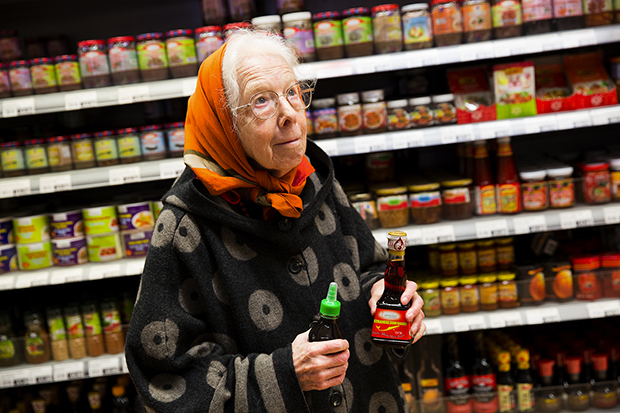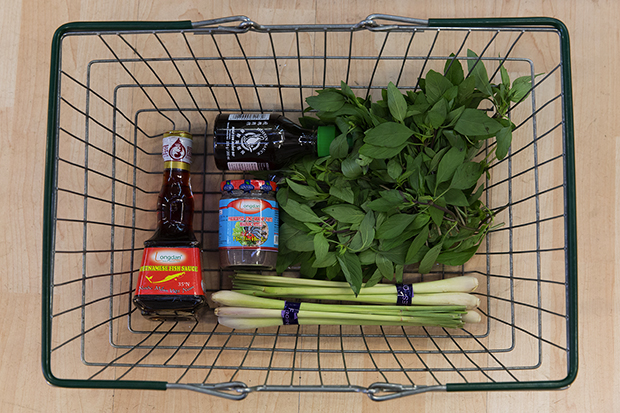Absolutely pho-bulous food from Hanoi by way of Shoreditch
The best antidote to an overload of warming British winter stodge is the light, bright, fragrant food of Vietnam. We can enjoy it in Hackney, thanks to a cluster of food stores and places to eat, some in Shoreditch, some on Mare Street.
An evening stroll in Shoreditch, at the end of Kingsland Road, revealed a resolute line of diners outside Sông Quê patiently waiting to get in. No hope. But back at noon the following day, exhausted by a bewildering foray into the Longdan supermarket, I collapsed into a bowl of pho, the archetypal comfort food of Vietnam. The ineffable lightness of the broth with its dense but subtle flavours, wafts the cold and hungry food historian into a beguiling comfort zone.
Trying to make pho at home would be counterproductive, so many ingredients, many of them secret, and so much skill is involved, but the small side dish of aromatics can transform many domestic recipes. The supermarket has a refrigerated display of Vietnamese herbs. The other day I counted five different kinds of mint, three of basil, and the wonderfully aromatic perilla, with its purplish leaves and lemony, minty flavour.
The demographics of the Vietnamese presence in London are confusing; an unofficial count of 5,000 shows it’s a small proportion of Hackney’s population, slipping under the radar, but beckoning clients from all over North London to shop and eat here. We are not a hub, like New Malden is for Korea, where 20,000 of the total 30,000 Koreans in the UK live.
The vast land mass of the Indo-Chinese peninsula has a complex history and a variety of cuisines. All three of Vietnam’s geographical areas have a special kind of cooking, but share a tumultuous history, from Chinese dominion for over 2,000 years to the recent tragic horrors of the Cold War. The fertile but much misused land produces fine ingredients and an amazing range of aromatic herbs and vegetables, and people as gentle and bright as their cuisine.
Balance of sensations
The five flavours of Vietnamese cooking are spicy, bitter, sour, salty and sweet, which are used to enhance or adjust the qualities of the ingredients. Colour comes into it too. Red, black, white, green, yellow, all have a special significance. Taste, texture, aroma and mouth-feel all combine to achieve a balance of sensations, from the crispness of deep fried batter-coated prawns, to the crunch of fried shallot on a crisp papaya salad, to the slithery bite of a rice-pancake wrapped salad roll, or the gooey slurp of noodles in
beef broth.
Each of the elements in a Vietnamese dish could be quite violent if insensitively handled, but the subtle combinations of ginger, galangale, garlic, onions, chilli and lemon grass, with the many kinds of fermented fish sauce and fish paste, and peppermint, spearmint, sweet basil, Thai basil and coriander, and many other special herbs, are gently aromatic.
Try it at home
One can eat, or browse in the food stores and come away with the key ingredients to try out at home. One of these is nuoc mam, fish sauce, a condiment with an unbelievably horrible smell and a sublime taste, made from rotting and fermented fish and their entrails. Liquamen, the Roman version, was manufactured on an industrial scale in Spain and Southern Italy and exported all over the Roman Empire. Some came to London, in ships that docked at Southwark, so it is not too fanciful to imagine the legionaries stopping off in Shoreditch for a bowl of fragrant pho.
For the sad squaddie heading for the chilly north, there must have been some comfort in smuggling a small flask of liquamen into his kit. If he could have stopped off and turned right up what is now Hackney Road, the most portable and fragrant condiment in the Longdan supermarket might have been a bunch of lemon grass. This herb is a lemon flavoured grass with all the aroma and pungency of lemon peel without the acidity of the juice. It is associated with Thai cuisine, but used all over South East Asia and brings perfume and pungency to many Vietnamese dishes. Our soon to be footsore and homesick legionary might have had the foresight to bring as substitute a plant of the hardy herb lemon balm, it grows well here, and gives a lemony tinge to salads and sauces; used with the native mint, coriander and mustard. We can use these in our attempts to cook Vietnamese food at home, while the fragrant herbs and vegetables mentioned above add an extra fragrant pungency. But the predominance of this amazing fish sauce can be judged by the impressive display of sauces and condiments in the supermarket. Buy lots, like me.
Duck with Orange
This is my adaptation of a
well–known recipe, of which there
are many versions:
2 duck breasts
2 oranges
garlic (to taste)
2 cloves finely chopped
a lump of ginger, size of a walnut, peeled and finely chopped
3 or 4 stalks of lemon grass
finely sliced
1 tablespoon Vietnamese fish sauce
1 teaspoon sugar
a handful each of chopped basil,
mint and coriander
some slivers of the orange peel
Cook the duck breasts skin down to sweat off most of the fat, pour this off and keep for something else. Turn over and add the juice of the oranges and all the other ingredients except the herbs. Cook covered on a low heat until tender (30 minutes to an hour). Remove the fat and slice the meat thinly. Sprinkle the herbs over, and serve with rice and a salad.
Green papaya salad is one of the stars of Vietnamese cuisine. Best done by a professional with a secret sauce and a machine for getting the hard veg into sinuous julienne strips. This dressing can work with any combination of salad vegetables, and cooked meat or fish.
Vietnamese-inspired Salad
Some sliced cooked beef,
rare if possible
1 cup bean sprouts, washed
1 head of blanched chicory
(endive), sliced
1 small red sweet pepper sliced
4 spring onions sliced diagonally
For the dressing
Vietnamese fish sauce
A little rice vinegar or lime juice
Sugar, palm or unrefined, to taste
Vietnamese fish paste to taste
chopped garlic and ginger
several leaves of lemongrass,
very finely chopped
For the garnish
Chopped basil, mint and coriander
Deep fried shallots and garlic
(from the supermarket)
Red birdseye chillies, thinly sliced
Stir fry the sweet pepper and chicory for a minute or two, add the bean shoots and toss for a few seconds, tip into a bowl and add the rest of the ingredients, mix well and slosh in the dressing, give it a good turn and add the garnish just before serving.


